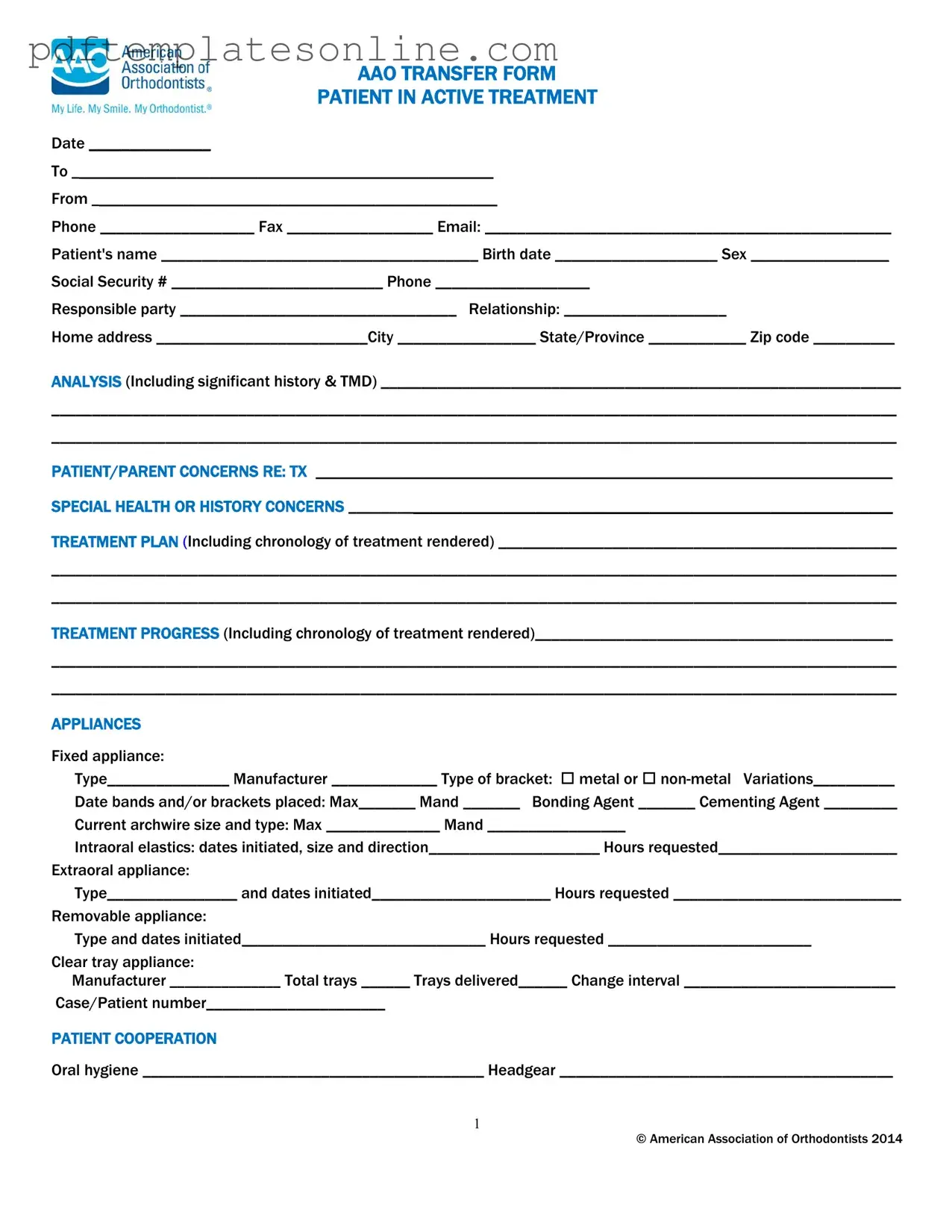Filling out the AAO Transfer Form requires attention to detail. One common mistake is leaving out the date at the top of the form. This information is crucial for tracking the timeline of treatment and ensuring that all parties are on the same page.
Another frequent error is failing to include the patient's full name and birth date. Incomplete identification can lead to confusion and delays in transferring records. It is essential that this information is accurate to avoid complications.
People often overlook the responsible party's information, including their relationship to the patient. This section is vital for establishing who is financially responsible for the treatment. Missing this detail can create issues with billing and communication.
Many individuals do not provide a complete treatment plan. This section should detail the chronology of treatments rendered and any future plans. A vague description may hinder the new provider's understanding of the patient's needs.
Some forms lack a clear statement of patient cooperation. This includes details on oral hygiene, appointment attendance, and any broken appliances. Such information is important for the new orthodontist to gauge how well the patient has adhered to the treatment plan.
Another mistake is neglecting to indicate the financial status of the account. This includes the total charges before the transfer, amounts paid, and any unpaid balance. Clear financial records help the new provider understand the patient’s obligations.
Individuals sometimes fail to check the appropriate status of records being transferred. Indicating whether records are enclosed or sent separately is crucial. Miscommunication in this area can lead to delays in treatment.
Inadequate details about appliances being used can also be problematic. The form should specify the type of appliances and their current status. This information is essential for the new orthodontist to provide effective care.
Lastly, many people forget to include signature and date from both the current orthodontist and the patient or guardian. This authorization is necessary for the transfer of records and ensures that all parties are legally compliant.
